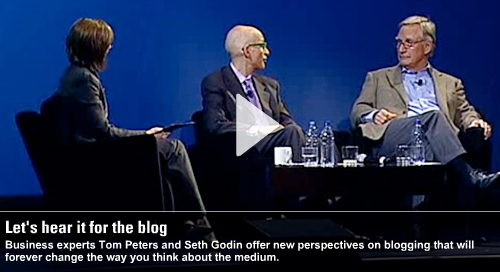
We have to get this blog up to 88mph!
Earlier this month, I was asked to present on the subject of social media marketing to our members at VISIT DENVER. As usual, it was a great group and a very good conversation on how to start or continue a social media marketing campaign. Where should I start? What should I talk about? What about Facebook? And so on.
While we talk frequently about the execution of a social campaign and the sites involved…Twitter, Facebook, TripAdvisor…it is also important to remember the benefits and necessity of research. Not only in social media, but also interactive marketing and traditional marketing in general.
Research can provide answers to our most pressing of questions. Is my site effective, are visitors happy with the content or are people finding value in my tweets? We all have theories, thoughts and personal opinions on what works best, but those ideas may not be shared by our customers. The way to find out, ask your consumers. Or, research.
And beyond on-site research, we also need answers to macro industry questions. What are the industry trends, what site features are travelers looking for or how are consumers booking travel?
For today let’s talk about the social and interactive side and how research can not only be effective, but easy to implement.
I know, I said easy. And really, it can be.
Industry Syndicated Research
Or, the reports you pay for. Expert opinions, in-depth research, thousands of data points and some very thorough results. Realistically, you probably will not purchase every report from these organizations, however you should take advantage of the free resources that these groups offer: email subscriptions, blogs and free research summaries.
PhoCusWright
The travel industry experts. Take advantage of the ‘Free Download’ section as well as the newly launched PhoCusWright Connect section…you can call it a blog. A lot of great information circulates through the Connect section, and aside from Travel 2.0, you really should be reading the Connect blog.
Full disclosure, we are syndicated on the Connect blog. I know, we are everywhere!
Pew Internet
Travel 2.0 vets already have Pew Internet in their Delicious profile. If you don’t, add it now. Although we noted above that these industry-wide services typically require a subscription or fee per report, Pew does not. While the site is not as industry focused as PhoCusWright (few are), Pew Internet does provide a broad base of research relating to the interactive space. Plus, email and RSS subscriptions are available, so sign up now.
Forrester
Providing copious reports on a variety of subjects, Forrester is arguably the largest of the industry research firms discussed here. An advantage that provides for a great depth of content, but relatively few travel or tourism specific reports. With that said, Forrester does offer free reports as well as the invaluable and highly respected Groundswell blog, created from the equally popular book / report of the same name.
Survey / Research Tools
The tools and sites to help you get research done. Some are free, some are a subscription service, but for anyone interested in learning about the thoughts and actions of your consumers, these services are invaluable.
Tourvey
A service that we use at VISIT DENVER, Tourvey is a basic survey that provides CVBs and DMOs a baseline report on website visitation and experience. While the benefit of a common survey allows for benchmarking against other destinations, the same structure does not allow for changes in the survey. Some of the questions are valuable, others are just wasteful. With that said, overall a valuable research tool.
4Q / iPerceptions
4Q, like Tourvey, is an on-site survey tool, however, unlike Tourvey, 4Q asks 4 simple questions, no more, no less. As with so many things, 4Q is brilliant due to its simplicity. Implement and find out the answers to the questions:
– What are my visitors at my website to do?
– Are they completing what they set out to do?
– If not, why not?
– How satisfied are my visitors?
Oh and did we mention it is free.
ClickTale
Ah, break out the tin foil hats because big brother is watching. ClickTale is basically a snippet of code, not unlike Google Analytics, that does more than just record keystrokes. It actually records and produces a video file that shows exactly where a visitor clicked, moved to and moused over. Forget asking visitors where they went, with ClickTale you have the video proof.
Wondering why a certain form is not converting? Start the tape, watch what your visitors are doing and then correct the problem. Research without having to ask a single question.
Tin foil optional.
Social Research
Often underutilized or unrealized, the power of social media / networking not only connects friends and former classmates, but provides us with a powerful look into the opinions, trends and patterns of travelers. Social media is not a one-way conversation, but rather provides the ideal vehicle for gaining knowledge on your demographic.
Twitter
We had to talk about it, so let’s just do it. Twitter is everywhere (like us!). And regardless of your like or dislike for this miracle of the Web 2.0 age, you cannot deny the value of information that is spawned by the random thoughts of the masses. As I mentioned in my presentation to our members, why not use Twitter as a source of free research?
Let’s say you are a hotel, who is redesigning rooms, and you have 3 different artist renditions. Sure, you can convene a focus group, but why use 12 people who only showed up at the session due to the promise of free donuts, when you have hundreds…perhaps thousands…of followers on Twitter who are brand loyal? The people who will actually stay in those new rooms! At the minimum, ask both groups.
Mmmm…donuts.
TripAdvisor
If you are a hotel, tourist restaurant or attraction, I hope you are already on and monitoring TripAdvisor. As a hotel or resort property, what better source than TripAdvisor, the Elvis of travel user-generated content, to discover, learn and research what your consumers think of your property.
Several comments about unclean towels? Time to check with the head housekeeper. Complaints about the view, smell, colors of the rooms? Perhaps a room remodel should be in your 24-month strategy. And hey, why not ask your Twitter followers about the new chairs?
Like Twitter, TripAdvisor is an often overlooked source of consumer opinion. Ask yourself this…do you pay more attention to the 1 or 2 guest survey cards you get each week that only you and your staff will see or to the 1 or 2 reviews on TripAdvisor that thousands of your guests will see?
Yelp / Urbanspoon
The young foodie sisters of TripAdvisor, Yelp and Urbanspoon focus on the dining scene, but provide the same opportunities as larger travel review site. Again, if you are a restaurant or, in the case of Yelp, possibly an attraction, you should be monitoring these sites to determine the trends of your consumers and visitors. After all, it is free.
Research, step 1 in your marketing…social, interactive or otherwise…campaign.











